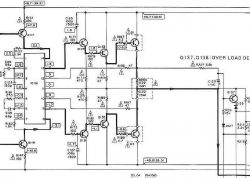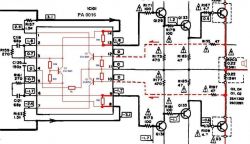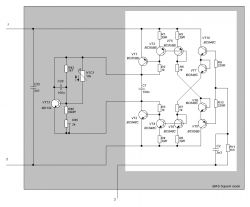PZ IX wrote: What am I going to? Well, PA0016 can be equipped with quiescent current detection, which interrupts the operation of the system in the event of extremely incorrect values. Not having plugged transducers. end, you are definitely reducing this current.
There is no such thing in the system, therefore, at the slightest malfunction, the system is damaged.
There is, however, the "Over load detector" detection system and the measurement of voltage drop across pin 10 and pin 12 emitter resistors. Lack of proper continuity in this path may cause various malfunctions.
Replacing a working system that is working properly with a system purchased for checking seems quite unreliable in such a precisely working system. The monolithic structure is not identical and similar, therefore each copy will have slightly different operating parameters - the spread.
It is good to physically and actually check all the values of the cooperating elements, as well as the continuity of connections.
After all, there are not that many of them.
majsterek wrote: Are you saying that securing with a light bulb will not work?
No, not in this amplifier, as in many others, it will not work. Please check the amount of charge in the filter capacitors. Calmly enough energy is enough to damage several such end stages. The optimal protection that always works is to limit the current between the stage itself and the amplifier's power supply. This is not always easy to do, but it is and can be done in several ways.

In this particular model, we have a simplified checking thanks to the possibility of checking the circuit itself (symmetry on pin 8-14) and the circuit with only Q129 / Q131 first stage transistors mounted, and then Q133 / Q135 next stage transistors mounted. At each stage, we check the symmetrical operation of the system manifested by 0 voltage on pin 11.

The assembly and checking of the Q1 and Q3 final stage elements is a pure formality in the case of correct symmetrical operation in the earlier stages of commissioning.












